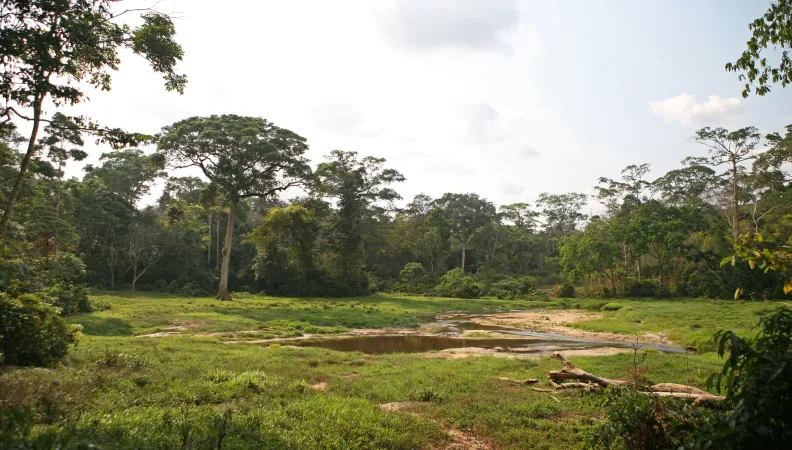Share the page
A public-private partnership to improve the sustainability of forestry planning (P3FAC)
Project


-
Project start date
-
Status
In progress
-
Estimated date of project termination
-
-
Project financing date
-
-
Financing duration
-
5 years
-
Type of program
-
FFEM
-
Global financing amount
-
€ 8 420 000
-
FFEM financing amount
-
€ 2 000 000
-
Project lead member institution(s)
-
French Ministry of Agriculture and Food, French Ministry for Ecological and Inclusive Transition (MTES)
-
Country and region
-
Cameroon, Democratic Republic of the Congo, Central African Republic
-
Location
-
Congo Gabon République centrafricaine RDC Cameroun
-
Type of financing
-
Partners
-
CIRAD, FNRS, Gembloux Agro-Bio Tech, PPECF2, private sector and other finance, WILDMEAT project
-
Beneficiaries
-
ATIBT in partnership with the COMIFAC
-
Type of beneficiary
-
International organisation


Central Africa is home to around 10% of global biodiversity. This area spans five countries and millions of hectares of forest. The FFEM supports the public-private partnership for the sustainable management of forests in Central Africa (P3FAC), with a view to making forest exploitation in the region more sustainable while taking into account its rich biodiversity.
Context
Spanning Cameroon, Congo, Gabon, the Central African Republic and the Democratic Republic of Congo, the total dense forest area in the Congo basin covers an estimated 160 million hectares. Forestry planning projects have been in place since the 2000s. They are fine-tuned on a regular basis, ensuring the ongoing sustainable management of these areas. The longest-standing projects, however, frequently encounter difficulties that cast doubt on their effectiveness and the extent to which they factor in sustainability.
Launched in 2013, the purpose of the DynAfFor project was to preserve the structure and dynamics of Central African forests by establishing timber processing rules combining the ecological functioning of tree populations with the variability of environmental conditions. The P3FAC project follows on from DynAfFor. It broadens the scope of research into forestry techniques, regeneration, fauna and non-wood forestry products (NWFPs) to better integrate local populations and mobilise forest administrations.
Description
The project has five components:
- Expanding data on forest dynamics (installing new sites, biomass quantification, publishing results).
- Analysing the impact of human activities on organic and ecological processes affecting the demographic dynamics of commercial tree populations and NWFPs.
- Proposing plans and approaches to forestry tailored to different types of forest, with a view to enhancing the sustainability of forest management.
- Incorporating the outcomes of research into sustainable forest management and practical methods for applying them in political decisions.
- Arranging an applied scientific workshop for technical discussions on the three tropical basins (Africa, Asia and the Americas).
Outcomes
- Improving the spatial coverage and diversity of the types of forest habitat studied through the research strategy on forest dynamics arising from the DynAfFor project
- Assessing and reducing the impact of human activities on ecological and organic systems
- Improving rules for managing and planning different types of forest and disseminating good practice
- Incorporating research outcomes into forest policies
- Exchanging information and sharing experiences between the three tropical basins
Innovative and exemplary features
Implementing and promoting applied research methods within the P3FAC project make this an innovative and exemplary project. The objective is to manage the properties of forest dynamics to better forecast the consequences of forest exploitation. As such, the P3FAC project complements DynAfFor, regarded as an innovative project in terms of its methods and objectives. The project is also pioneering in its ambition to further research the harvesting of certain NWFPs and the impact of processing such products on ecosystems and their dynamics.
Finally, once the project has concluded, lessons must be drawn from its innovative operational approach, which includes various collaboration arrangements between international research bodies.
The project evaluation overview
Sustainable Development Goals
ODD17 Partnerships for the goals

ODD13 Climate action



